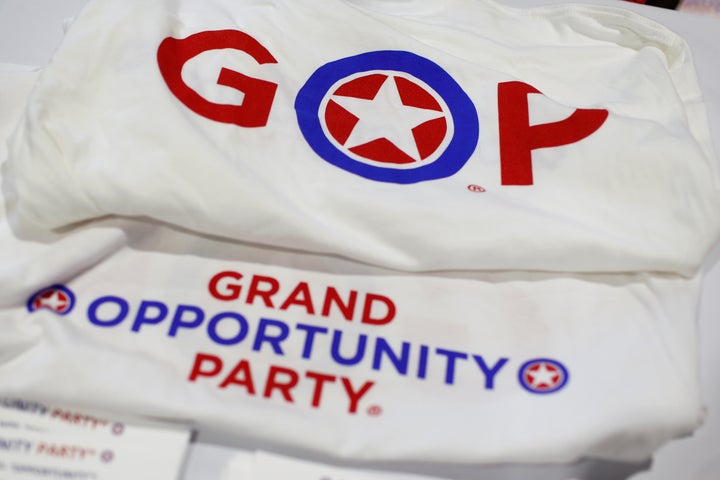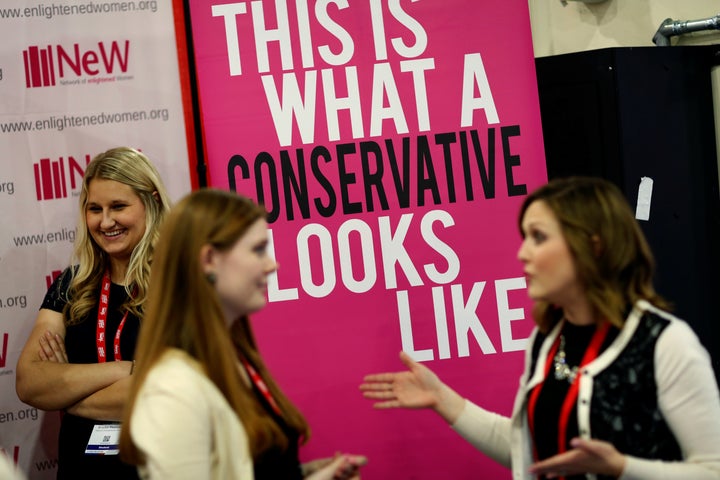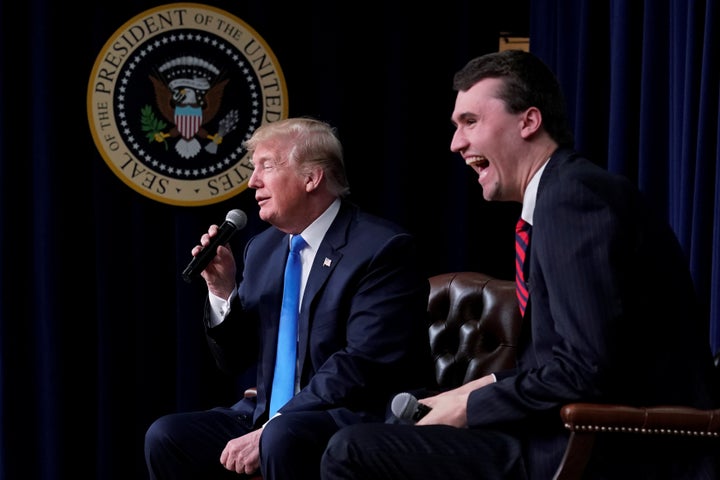
After he graduated from college, it took Nathan two years, three unpaid internships and six bartending and retail jobs before he got his first paid gig in progressive politics. His employer was a small, millennial-focused outreach nonprofit, and his job was to supervise four interns — young kids, fresh out of school, working the same day job/night job, 80-hour-a-week cycle he had just exited.
Nathan, who wouldn’t give his real name out of fear of retaliation, asked his boss if he could start paying the interns. “I didn’t think I was going to get them federal minimum wage — that’s impossible in Washington,” he said. “But at least they could get a stipend.”
His boss refused, without offering much of a case for why they couldn’t afford to pay them.
“It just wasn’t a conversation,” Nathan said. “I didn’t have the authority to push it because I was a low-level person.”
He felt complicit, and after a few months, he quit. He’s currently in grad school to become a teacher.
“I had a lot of hope that my party would not be slimy,” he said. “But that felt slimy.”
Nathan’s experience is emblematic of a growing concern on the left: For a movement that wants to reach young people, low-income workers and people of color, progressive organizations and candidates don’t offer many paid opportunities.
“This is why we see attrition in the movement,” said Maggie Thompson, executive director of Generation Progress, the youth arm of the liberal think tank Center for American Progress (which pays its interns, incidentally).
For decades, internships, fellowships and paid travel to conferences have acted like a tractor beam, drawing young people into political movements and holding them long enough to become researchers, strategists and candidates. But the funding to support those kinds of programs hasn’t kept up with the economic realities of the young people who today’s progressives are trying to reach.
“The pipeline of young people who can get through school, deal with student debt and stay involved in politics has shrunk dramatically compared to previous generations,” Thompson said.
Progressives aren’t just out of sync with their own need to recruit and retain young people. They’re also lagging behind conservative interests. A 2017 study found that between 2008 and 2014, conservative donors gave three times more to millennial outreach groups than liberal donors. Much of that funding, Thompson says, went to things like paid fellowships, travel stipends and study grants ― creating the feeder system that will guide young people into actual jobs with political campaigns and think tanks.
“The Republicans are building an army, while the Democrats are still paying you in ‘making the world a better place,’” said Carlos Vera, the executive director of Pay Our Interns, a watchdog group. “I’ve had older people say to me, ‘Well, I did unpaid internships and I was fine.’ Then you ask them when that was and they say, ‘1972.’ You could work your way through college back then. That simply is not the case anymore.”
Vera spent last year calling every lawmaker in the House and Senate and asking whether they paid their interns. His report, Experience Doesn’t Pay the Bills, found that more than half of Republican senators offered paid internships, compared to fewer than a third of Democratic senators. In the House it was even worse: Twice as many Republicans as Democrats paid their interns.
This year, Vera has been calling nonprofits and think tanks and asking them the same thing. So far he’s found the same pattern: The Heritage Foundation, the Cato Institute and Americans for Prosperity pay their interns. The Progressive Policy Institute, Let America Vote and the Human Rights Campaign don’t.
“Between 2008 and 2014, conservative donors gave three times more to millennial outreach groups than liberal donors.”
Though harder to quantify than political donations, it appears that conservatives have built a recruitment, retention and leadership development apparatus that dwarfs that of the left. The Charles Koch Institute has an “associates program” that places young professionals in conservative think tanks and pays an average of $41,000 per year. The Leadership Institute, a conservative youth organization, offers interns free accommodation, free food, an $825-per-month stipend and a $200 “book allowance.”
Thompson is on the mailing lists for several conservative youth organizations, and says they feature “nonstop travel scholarships, fellowships and opportunities.” Her progressive lists don’t offer nearly the same volume of funded positions.
While some left-leaning think tanks do offer paid internships and fellowships, they tend to be less generous. EMILY’s List, for example, offers a stipend of “up to $300 per month, dependent on schedule,” but no housing. The American Civil Liberties Union tells internship applicants that “a modest stipend may be available if the student does not receive outside funding.” New America offers course credits to its interns, which means they may actually be paying to work. (Following the publication of this article, New America contacted HuffPost to say it plans to pay all future interns, and that it has always offered paid as well as unpaid internships.)

Republicans are more deliberate about college outreach
The most glaring reason for the left-right youth investment gap is the sheer scale of the conservative political machine. In 2016, the Heritage Foundation and the American Enterprise Institute both had revenues above $75 million. The largest progressive think tank, the Center for American Progress, had just $40.9 million.
Republicans are also more deliberate with their outreach on college campuses. According to its 2017 tax filings, the Leadership Institute held 355 trainings for conservative students last year. In 2015, Young America’s Foundation spent $13 million on lectures, conferences, seminars and outreach — more than twice the entire budget of Young Invincibles, its rough analogue on the left. Turning Point USA, whose mission is to “identify, educate, train, and organize” college conservatives, went from $79,000 to $4.3 million in revenue in just three years.
Conservatives have also invested in youth-oriented news sources. These include the news outlet Campus Reform (sample headline: “Financial aid for illegals likely to cost NJ nearly $5M/year”), the blog Red Alert Politics (“A’s for liberal papers only: A conservative’s college experience”) and the viral video shop Prager University (“The Least Free Place in America”). They all focus almost exclusively on the dangers of political correctness and the threats to free speech on college campuses.
“The Republicans are building an army, while the Democrats are still paying you in "making the world a better place."”
- Carlos Vera, executive director of Pay Our Interns
All this investment doesn’t mean, of course, that conservatives are winning the battle for millennial hearts and minds. Only 12 percent of young people considered themselves mostly or consistently conservative in a 2017 Pew poll, a 4-point drop since 2011. Progressive political organizations — as outlets like Campus Reform are always reminding us — still vastly outnumber conservative organizations on college campuses.
But these differences do demonstrate the structural challenge of building a left-wing talent pipeline. Progressives are spread across a huge range of groups and issues — income inequality, climate change, racial justice — and have fewer organizations explicitly dedicated to movement-building than conservatives. That makes it harder to prioritize long-term investments over short-term wins.
“The right is focused on the long game of investing in people when they find them on a college campus,” said Stephen Kent, the spokesperson for Young Voices Advocates, a nonprofit that, among other things, helps libertarian students place op-eds in their college newspapers. “The left-leaning groups are working on whatever election is facing them in the next 12 months. Then all those connections die.”
Amy Binder, a researcher at the University of California, San Diego, and the co-author of Becoming Right: How Campuses Shape Young Conservatives, has spent the past year interviewing students at four large state schools. She sees the same trend.
“What the right is doing is creating a cadre of potential leaders,” she said. “When they’re on campus they aren’t necessarily doing the bidding of donors, but they’re getting to know each other. They’re professionalizing and socializing students. I don’t see that happening on the left in the same way.”
Losing talent, missing opportunities
While understandable given its constraints, the left’s challenges in movement-building are making it harder to transition from winning elections to making policy.
One veteran progressive organizer, who didn’t want to be named out of concern for losing donors, points out that winning elections is just one component of building political power.
“When you can’t get funding outside of that, you have to raise it elsewhere,” she said. “It’s a huge waste of time at a moment when statehouses are in session and we should be doing accountability work and getting laws passed.”
And that’s not the only missed opportunity. Nearly everyone I spoke to pointed out that this has created not just a generation gap in progressive groups, but racial disparities between the voters they are trying to reach and the organizations representing them. A 2013 study found that 88 percent of nonprofit staffers and 92 percent of CEOs were white. Another, in 2016, found that only 11 percent of nonprofit staffers were under 30.
“The right is focused on the long game of investing in people when they find them on a college campus.”
- Stephen Kent, spokesperson for Young Voices Advocates
“We pride ourselves on supporting young people in our ideology, but then we don’t give them any options,” said Maxwell Love, a former president of the U.S. Student Association. He attended several left-wing political trainings as a student, he says, but there were few paid opportunities available. He’s watched many of his peers drift away from politics.
“We’re missing people at their most formative political years,” he said. “I’m blown away by all the people in student government who seemed like they would work in progressive politics and then boom, they’re working at Oracle or they’re a business consultant. I’m not going to blame anyone for doing that, but it means we can’t hold on to talent, especially working-class folks and people of color.”
The long-term ripple effects of this underinvestment are already visible. The average Democrat in Congress is 59.6 years old, almost four years older than the average Republican. The GOP has 23 senators under 60, compared to just 13 Democrats.
Love is now 27 and a Wisconsin-based organizer for Our Revolution, the continuation of the Bernie Sanders campaign. He says there’s nothing inevitable about young people remaining Democrats ― he meets many young conservatives in the course of his work.
“Maybe this isn’t a group we have on lock,” he said.

The fault in our donors
The lack of paid, entry-level jobs in progressive politics isn’t just the fault of Democrats or liberal organizations. Alexander Hertel-Fernandez, a political scientist at Columbia University, says the real culprit is donors.
He compares the largest donor networks on the left and the right, the Democracy Alliance and the network of political organizations known as the “Koch network.” They’re similar in a lot of ways: Both pool donations from wealthy donors, vet recipients and seek to pull candidates closer to their causes.
Where they differ are their structures ― and their effectiveness. Hertel-Fernandez points out that since 2012, the Koch network, despite its lack of formal structure, has become more centralized and hierarchical. It gives to the favorite causes of its founders, billionaire fossil fuel moguls Charles and David Koch, and, increasingly, to organizations they control directly. Freedom Partners, one of the Koch network’s largest nonprofits, concentrates the majority of its giving on just eight organizations.
The Democracy Alliance, on the other hand, has moved in the opposite direction, giving smaller donations to a wider range of charities and delegating control to its members, according to Hertel-Fernandez’s research. The Democracy Alliance did not respond to a request for comment.
“It’s hard to steer the ship of progressive donors,” Hertel-Fernandez said. “All of the folks participating in the Democracy Alliance have their own favorite issues and strategies. They come in with a set of organizations they’re enthusiastic about. In the Koch network, you’re signing up to support the Kochs’ agenda.”
The way this difference manifests on the ground is in the balance between united, general funding versus activity-specific and project-based funding.
Sarah Audelo, executive director of the Alliance for Youth Action, a consortium of youth-focused member organizations, says most of her donors want data and metrics on how their donations are spent. For some projects, they pay per door knock. That’s understandable ― who doesn’t want their donations to be spent efficiently? ― but it also means she has less room for experimentation, and less flexibility to hire staff and capitalize on the youth activism spreading across the country since 2016 on issues like immigration and gun violence.
“Since Parkland, we’ve got tons of young people engaging,” she said. Her groups want to scale to meet the demand, but donors don’t always want to provide the resources to hire enough full-time, paid staff.
“You can’t manage contacts and track legislation with only volunteers,” she said. “In some places, we’re literally turning away young people who are great candidates for interns and fellows because we don’t have the capacity to give them a positive experience. Progressives shouldn’t be turning away young people in states like Texas.”
Hertel-Fernandez says the strategy conservative donors have employed — get large and stay large — is part of what’s allowed conservative mobilization groups like Americans for Prosperity to mobilize so quickly around opposing Medicaid expansion, restricting public sector unions and pre-empting cities from raising the minimum wage.
“They’ve made strategic investments,” he said. “Americans for Prosperity is organized at the local, state and national level. If you want to affect politics in the United States, you have to organize at all of those levels. They’ve moved the party further and faster to the right than progressives have moved the Democrats to the left.”

Things are changing
Katie Kirchner, deputy director of the Roosevelt Network ― the campus outreach arm of the Roosevelt Institute, a progressive think tank ― says progressive organizing has always been an uphill battle.
“Conservatives are looking to reinforce existing power structures, where we’re looking to change them,” Kirchner said. “They have a strong funding edge, but they’re still losing the moral fight in the long run. Millennials are progressive.”
She says things are changing. Many of the largest progressive organizations have started paying their interns. The Roosevelt Institute offers a part-time fellowship that pays community college students $750 a month to organize on their own campuses. NextGen America, one of the most rapidly expanding progressive groups, is currently offering paid fellowships all over the country. Love says Our Revolution pays its interns $3,000 for the summer.
Still, if progressive organizations want to build a movement that attracts and reflects the demographics crucial to their success, a much larger swath of them will have to offer something beyond 80-hour weeks, three-figure stipends and bartending side gigs.
Thompson says her first job in politics was knocking on doors for a living wage campaign in Minnesota. Her student aid paid her a stipend, and borrowing her parents’ Corolla allowed her to cover more ground.
“Eventually, I got to work for Barack Obama,” she said. “But what it took at the beginning was an $1,800 stipend and an old car.”
